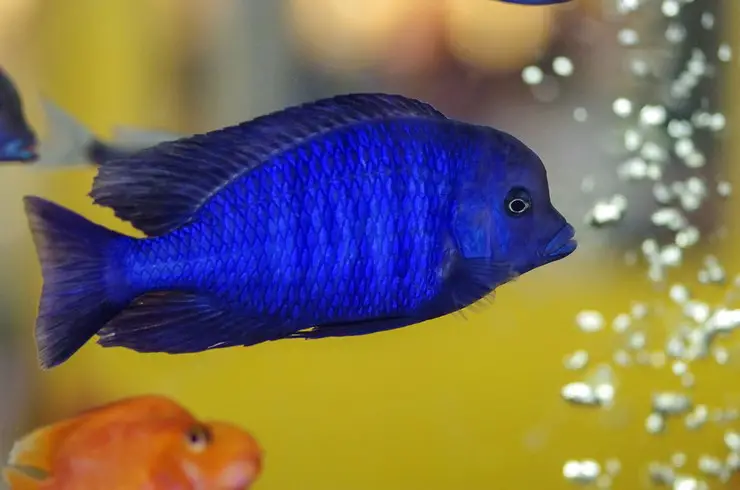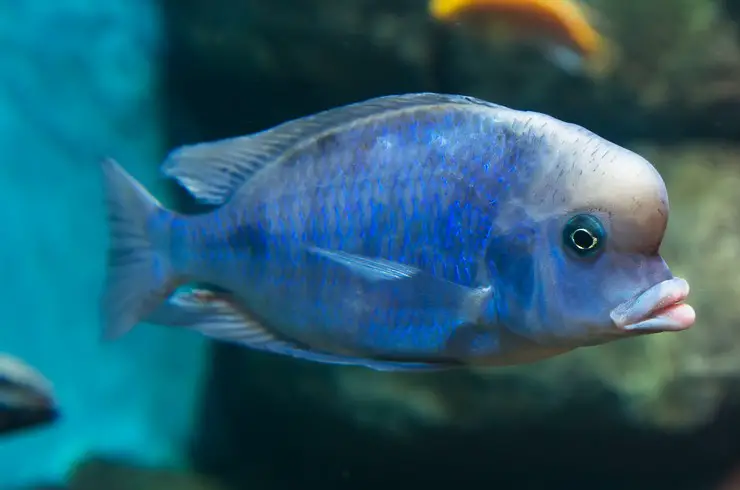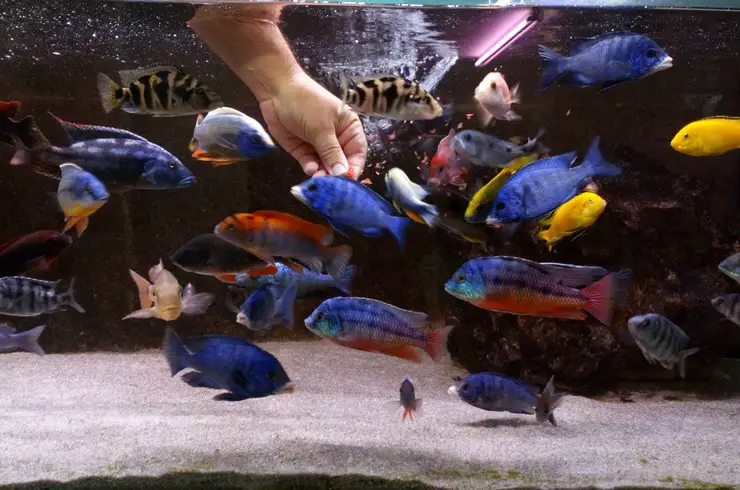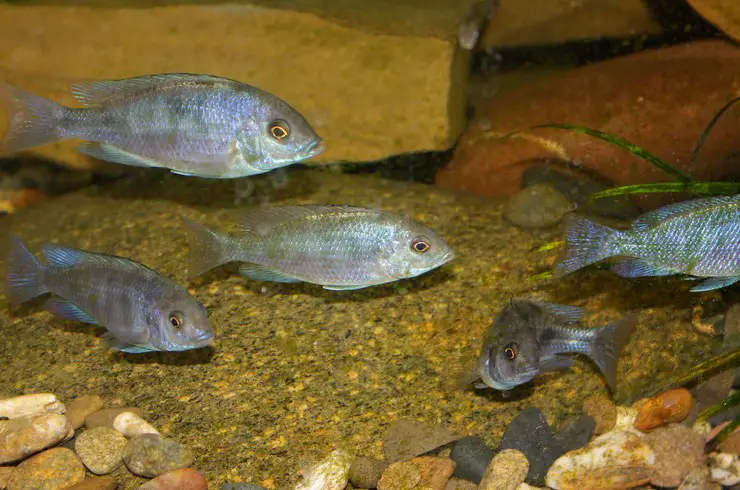Among the wide variety of Malawian cichlids, the blue dolphin stands alone. The bright color and unusual fat build-up make these fish very attractive. You can learn about the features of their content from our article.
General information
The blue dolphin (Cyrtocara moorii) is endemic to Lake Malawi. A distinctive feature of these fish is bright blue body color and a characteristic fatty lump on the head, which makes the Circtakara look like a dolphin.
Unlike most of their relatives, they have a relatively calm disposition, sometimes even shy. The fish are large, so a large aquarium is needed for keeping.
Appearance
The blue dolphin is one of the largest Malawian cichlids. In a suitable volume, the fish can grow up to 25 cm. The body is stocky, overweight, on the head, there is a large fatty growth, which appears in both females and males. The eyes are large, the lips are thick. The body is painted in deep blue color with small black splashes. The dominant males become dark blue in color. The fins are long, colored blue, the tail is two-lobed. Males are larger than females.
Habitat
Blue dolphins live only in the African lake Malawi. It was formed as a result of water filling cracks in the earth’s crust caused by the movement of lithospheric plates. The fish live at depths from 3 to 15 m. The species was first described in 1902 and got into amateur aquariums half a century later. Blue dolphins live in flocks looking for food on the sandy bottom.
Care and maintenance
Considering the maximum size of the fish, it is necessary to take care of a spacious aquarium with a volume of at least 250-300 liters. When decorating, it is advisable to imitate natural habitat. Coral sand (aragonite) can be used as a substrate. It is also necessary to install a variety of decorations from stones and massive driftwood, not forgetting to leave room for free swimming.
The waters of Lake Malawi are characterized by purity and constancy of hydrochemical composition, therefore it is necessary to organize effective filtration and aeration.
Optimal parameters for the content: T = 24-27 ° C, pH = 7.3-8.8, GH = 8-25. The water for blue dolphins should ideally be hard and alkaline. Coral chips can be used to increase the hardness. Regular testing of the water is necessary to take urgent action in case of deviations. Obligatory weekly water change 20-30% of the volume of the aquarium.
It is better not to use live plants, most likely, they will be quickly dug up or destroyed by fish. If desired, you can plant hard-leaved species (for example, anubias), which must be firmly fixed.
Compatibility
It is optimal to keep blue dolphins in a species aquarium. It is advisable to stick to the ratio of 1 male and 3 females or 2 males and 4-6 females. Males can fight, but usually do not seriously damage each other. In general, the fish is quite peaceful, it goes well with other African cichlids, although aggressive-minded fish from the Mbuna group are best avoided in the general aquarium. Great neighbors will be frontons, cynodonts catfish, labidochromis, aulonocars.
Feeding the blue dolphin
In nature, blue dolphins feed on bottom-dwelling organisms and small fish. They are predators, so their diet should consist of animal products as much as possible. Usually, live or frozen food is used for this (bloodworm, tubule, brine shrimp, etc.). But it should be noted that living food organisms can be carriers of dangerous infections and parasites. Frozen foods are safer, but not balanced. There is also a practice of feeding blue dolphins with homemade minced meat based on beef heart or liver. Unfortunately, such feeding is also not the best option, it can lead to digestive problems and obesity.
Therefore, it is better to give preference to high-quality dry food. They are devoid of the disadvantages of the previous ones and fully provide the fish with everything they need.
Tetra Cichlid Sticks are the best choice for the daily feeding of large cichlids like the blue dolphin. The sticks are high in protein, which is important for the digestion of predators. The food floats on the surface of the water and is available for eating by fish for a long time.
Dolphins are also good for the oversized flakes – Tetra Cichlid XL Flakes. They are convenient to use for a large number of fish. The feed spreads over the entire water surface and reduces competition.
If your fish prefer to grab food in the water column, consider the main food for all large ornamental fish TetraMin XL Granules
Do not forget that you need to feed the fish several times a day with such an amount of food that will be eaten in 2-3 minutes.
Reproduction and breeding
Puberty in blue dolphins occurs when the fish reach a size of 13-15 cm. Unfortunately, it is not possible to accurately determine the gender of young individuals. Therefore, it is best to acquire from 10 fries, as they grow, shedding “extra” males. Spawning takes place in the general aquarium.
The male is engaged in arranging the nest. Usually, a large flat rock is used, or just a hole dug in sandy soil. The coloration of the male at this time becomes very bright. The female, who has accepted the courtship, lays in the nest from 20 to 90 eggs, which are fertilized by the male. After that, all care for the offspring falls on the shoulders of the mother, because she collects the eggs in her mouth, where the incubation will take place. On average, egg development lasts about 3 weeks. At this time, the female does not eat anything. But even after hatching, the fry remains with the mother for another month and hide in her mouth at the first sign of danger. This breeding strategy increases the chances of survival of the juveniles. The fry are large, they can immediately eat ready-made dry food for fish, but they grow slowly.

